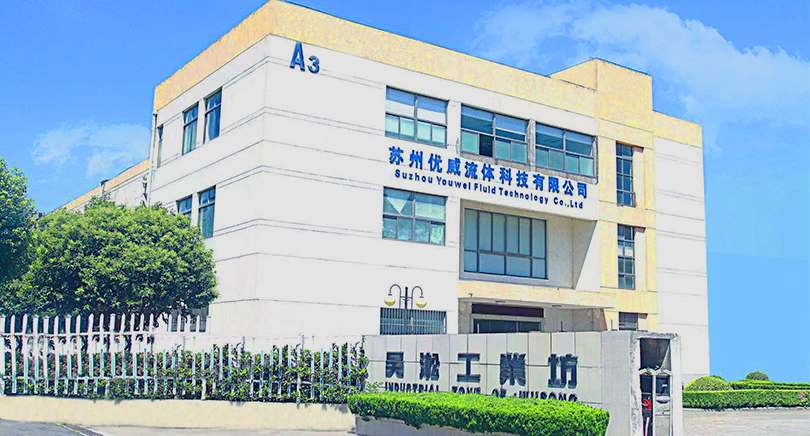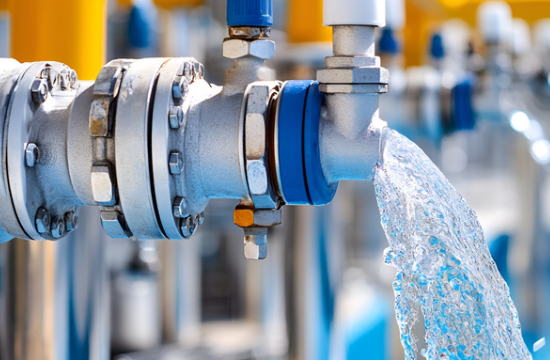New demands for the future development of China's valve manufacturing industry: dual drive of technological innovation and industrial upgrading
Release time:
2025-07-23 16:36:38
Under the dual promotion of the global Industry 4.0 wave and the "dual carbon" goal, China's valve manufacturing industry is undergoing a profound transformation from traditional manufacturing to intelligent, green, and high-end. As the core component of fluid control system,As the core component of fluid control systems, the technological upgrading of the valve industry not only concerns the safety and efficiency of industrial systems, but also becomes a key support for national energy transformation and industrial upgrading. This article will analyze the core requirements for the future development of China's valve manufacturing industry from four dimensions: market demand, technological innovation, industrial chain collaboration, and global layout.
1、 High end demand: breakthroughThe bottleneck of "neck sticking" technology
1. Localization of extreme working condition valves
With the rapid development of nuclear power, deep-sea oil and gas development, supercritical thermal power and other fields, the demand for extreme condition valves has surged.
For example, the main steam isolation valve of a nuclear power plant needs to withstand high temperature, high pressure, and strong radiation, while deep-sea valves need to resist seawater corrosion and high-pressure environments. Currently, the localization rate of nuclear power valves in China has exceeded90%, but some key components still rely on imports. Key breakthroughs are needed in the future:
Material Innovation: Developing special alloys and composite materials that are resistant to high temperatures and corrosion, such as Hastelloy and ceramic coatings;
Structural optimization: Improve sealing performance and service life through technologies such as triple eccentric design and double sealing structure;
Test verification: Establish an extreme working condition simulation laboratory and improve the full lifecycle reliability testing system.
2. Special valves for the field of new energy
The rise of new energy industries such as hydrogen, photovoltaics, and energy storage has spurred the demand for new products such as ultra-low temperature valves and high-precision regulating valves.
Hydrogen energy valve: must meet the requirements-The low leakage requirement for liquid hydrogen environment at 253 ℃ has been met by Shanghai Outelai Valve, which has achieved a leakage rate of<10 ⁻⁸ mbar · L/s;
Photovoltaic driven valve: Combining intelligent sensors and wireless communication technology to achieve remote monitoring and automatic adjustment of photovoltaic power plants;
Lithium battery slurry delivery valve: equipped with wear-resistant ceramic coating, suitable for long-term flushing of high solid content slurry.
2、 Intelligent demand: fromFrom 'Mechanical Device' to 'Intelligent Terminal'
1. Integration of intelligent valve system
Intelligent valves achieve remote monitoring, fault diagnosis, and automatic adjustment by integrating sensors, actuators, and communication modules. Future development directions include:
AI driven predictive maintenance: using machine learning algorithms to analyze valve operation data, warning potential faults in advance, and reducing unplanned downtime;
Digital twin technology: constructing virtual models of valves, optimizing design parameters and simulating actual working conditions, shortening the research and development cycle;
Edge computing and5G communication: realize real-time data interaction between valves and industrial Internet platform, and support remote control and cluster management.
2. Industry customized solutions
There are significant differences in performance requirements for valves in different industries, and targeted solutions need to be provided:
Petrochemical industry: Develop explosion-proof and sulfur resistant intelligent control valves to meet the safety requirements of flammable and explosive environments;
Water industry: Deploy low-power IoT valves to achieve zoning metering and leakage control of urban water supply networks;
Biopharmaceuticals: Designed to comply withGMP standard sterile valves have a surface roughness Ra ≤ 0.2 μ m to prevent microbial attachment.
3、 Green demand: low-carbon manufacturing and full lifecycle management
1. Environmentally friendly materials and processes
existUnder the "dual carbon" goal, valve manufacturing needs to reduce carbon emissions from the source:
Lightweight design: using new materials such as titanium alloy and carbon fiber to reduce valve weight and energy consumption;
Green coating technology: promoting water-based coatings and chromium free passivation processes to reduce volatile organic compounds(VOC emissions;
Short process casting: application3D printing technology achieves integrated molding of complex flow channels, shortens production cycles, and reduces material waste.
2. Whole life cycle carbon management
Establish a carbon footprint tracking system for valve products, covering the entire process of design, production, transportation, use, and recycling:
Blockchain technology: Record the raw material sources, energy consumption data, and maintenance records of each valve to ensure that its environmental attributes are verifiable;
Remanufacturing services: dismantling, cleaning, and performance restoration of waste valves to extend product lifespan and reduce resource consumption;
Circular economy model: Collaborate with downstream users to provide valve leasing and on-demand maintenance services, reducing full lifecycle costs.
4、 Globalization demand: fromFrom 'Made in China' to 'Global Brand'
1. International standard certification and localization services
withWith the promotion of the "the Belt and Road" initiative, China's valve enterprises need to accelerate their international layout:
Standard docking: ThroughAPI, ISO, ATEX and other international certifications meet the market access requirements in Europe and America;
Regional Service Center: Establish local factories and after-sales teams in emerging markets such as Southeast Asia and the Middle East to shorten delivery cycles;
Cross border mergers and acquisitions: acquiring overseas technology-based enterprises to fill the gaps in high-end fields such as deep-sea valves and ultra-low temperature valves.
2. Global supply chain collaboration
Building a stable and efficient global supply chain system to address geopolitical risks:
Diversified procurement: reduce dependence on single country raw materials, develop domestic special steel and electronic components;
Digital supply chain: Applying IoT technology to achieve inventory visualization and logistics optimization, reducing operating costs;
Emergency response mechanism: Establish a global spare parts warehouse and rapid maintenance network to ensure the continuous operation of critical projects.
Conclusion: Innovation driven, reshaping industrial ecology
The future development of China's valve manufacturing industry requires technological innovation as the core, market demand as the guide, green and low-carbon as the bottom line, and global layout as the vision. From Suzhou Neway Valve's breakthrough in cryogenic valves to Shanghai Guanlong Valve's digital twin platform; From the nuclear power localization of Jiangsu Shentong Valve to the biopharmaceutical sterile valve of Zhejiang Benigo Fluid——These cases indicate that Chinese valve companies have the strength to move from "following" to "running in parallel" and even "leading". Under the dual opportunities of dual carbon targets and new industrialization, the valve industry is bound to usher in a new growth cycle and become a key force in promoting China's transition from manufacturing to intelligent manufacturing.
keyword:
No more
next page
news

Responsible person: Manager Li
Sales Hotline:0512-65302667
Enterprise email:info@youweifluid.com
Company Address: No. 28 Datong Road, Huqiu District, Suzhou City
No.28, Datong Road, Huqiu District, Suzhou City

Scan the code to follow
Suzhou Youwei Fluid Technology Co., Ltd







 0086-512-6270-1855
0086-512-6270-1855 

 info@youweifluid.com
info@youweifluid.com